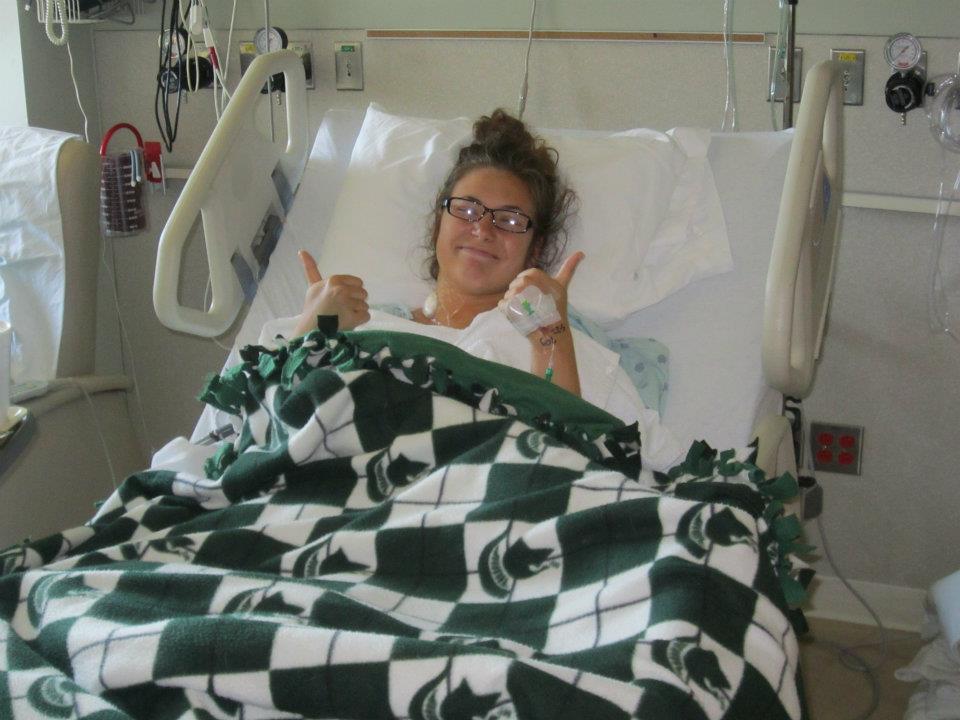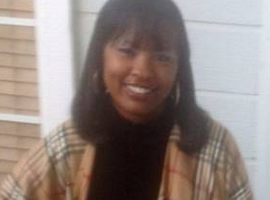The personal story below is intended for informational purposes only. The National Blood Clot Alliance (NBCA) holds the rights to all content that appears on its website. The use by another organization or online group of any content on NBCA’s website, including the patient stories that appear here, does not imply that NBCA is connected to these other organizations or groups or condones or endorses their work. Please contact info@stoptheclot.org with questions about this matter.
My name is Amy Reck, I’m eighteen years old, and a student at Michigan State University. I had suffered a DVT (deep vein thrombosis or blood clot in the leg) last year, and found out that I have not only May-Thurner Syndrome, I also have Factor V Leiden. This is my story:
Two years ago in May, the week before I got out of high school for good, I was admitted to the University of Michigan hospital to undergo treatment of a DVT. I was only seventeen, so the major thought was that my birth control pills caused it.
However, after further investigation, it turned out that I had May-Thurner Syndrome (MTS) and Factor V Leiden. MTS is where a vein in the leg is compressed by an artery in the leg, which increases the risk of a DVT in the left leg.
Factor V Leiden is a common genetic condition that makes it more likely for you to have a blood clot.
My doctors talked over the options with my parents and I (since I was a minor), and we decided on the use of Thrombolytics, or lytics for short) (tissue plasminogen activator or tPA, for example). This treatment involved catheters being inserted into my veins to emit powerful medicine that dissolved the clot.
The treatment was scary and painful. At one point I had three different catheters in my veins: one down from my neck, one down my groin, and one up the back of my knee. I remember various parts of the procedures when they inserted them because I was not completely knocked out – only heavily medicated. It was extremely scary. I do not think there was a day in the hospital when I didn’t cry.
Along with the various catheters, I had IVs dispersing blood thinners as well. The count of tubes in my body at one point was 8. I was released after six days in the hospital, with Lovenox, Plavix®, and baby aspirin. I had to give shots of Lovenox into my stomach for a month and a half until my blood was thin enough to start taking Coumadin® instead. I have two stents (mesh tubes used to keep the veins open) in my leg where the vein was compressed. I will have to get a Venogram (X-ray tests of blood flow) three times more to check the stents and make sure everything is flowing okay before I am free and clear to live a completely normal life.
Being at college is hard. Because of my blood thinners I bruise really easily. Of course I am underage so I’m not allowed to drink; But if I chose to drink I could get dangerously thin blood. Other than those few set backs, I’m living a normal life, I get my INR checked once a week, and have learned to not be afraid of needles. I cannot take hormonal birth control for the rest of my life, but that’s easy to overcome thanks to the IUD.
The experience was scary and awful, but I learned that I am stronger than I thought I was, and that I can get through anything with support from my family. I just want to open up the channels of communication to anyone who has had to go through what I did. It was scary and I wish I had someone to talk to that went through the same thing I did.
Take Home Messages:
- Teenagers do get blood clots. Blood Clots can affect anyone at any age.
- MTS is rare, but it can happen and people usually don’t know they have it until they get a DVT in their left leg.
- Factor V Leiden is not rare, but people usually don’t know they have it until they get a DVT or PE
- Taking hormonal birth control increases your risk of blood clots, especially if you have Factor V Leiden.
- Blood clots change your life a little but make you stronger.
- Family support is very helpful when you go through the experience of a blood clot.




